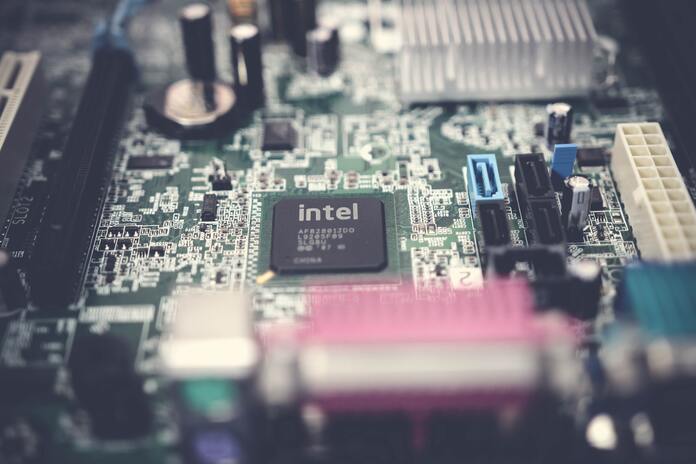Intel stock (NASDAQ:INTC) price has been falling for almost two years and shows no indications of recovery. In fact, things are just getting worse: the technology gap is expanding, and the balance sheet’s health is deteriorating. The corporation’s troubles are getting worse by the quarter. And, while the financial bottom has most certainly been reached, I believe investors’ concerns accurately represent Intel’s troubles.
Large-Scale Upheaval
The global PC market is in a deep slump, owing primarily to inventory depletion, which peaked in 2021. Shipments continue to fall substantially, falling 28% year on year in Q1. Intel’s primary market has been in decline for over a year. The conclusion of inventory digestion means that the market may begin to revive gradually in H2 2023.
As a result of the failure of consumer demand for electronics, semiconductor sales are falling at an all-time low.
Global Semiconductor Sales Fall 8.7% in the First Quarter; March Sales Rise Month Over Month for the First Time Since May 2022 SIA
As a result, the first quarter was one of the worst in Intel’s history in terms of sales decline and net loss depth. Despite the fact that the macroeconomic situation and the level of finished product stocks remain highly unclear, management forecasts revenue in the range of $11.5-12.5 billion in Q2 (up from $11.7 billion in Q1). Furthermore, the gross margin prediction expects an increase from 34.2% to 37.5%. We might conclude that Intel’s financial bottom was most likely reached in the preceding quarter. However, this does not imply that a sustained rebound to 2021 or even pre-COVID levels is imminent.
Looking ahead, there is no evidence of increased demand for electronics in the next 12 months, owing to the impending recession. According to the University of Michigan, the US consumer mood index plummeted to a semi-annual low of 57.7 in early May, and expectations were declining swiftly at the time. Furthermore, long-term economic prospects are diminishing; Americans do not expect a smooth landing.
Technological Chasm
The technological gap between Intel and its rivals remains significant. One of the reasons is a slowing in innovation: Intel introduces radically new devices every 5 years or so, then studies competitors and modifies the ones that hit the market. Correspondingly, sales increased quickly before entering a long sideways cycle; there have been four such cycles since the late 1990s.
The corporation was harmed by manufacturing flaws: a series of bad decisions led to delays in the creation of new products in recent years. AMD (NASDAQ:AMD) totally outsourced chip fabrication to TSMC (NYSE:TSM) and received capital release from the need to establish their own facilities, as well as more efficient and technological production, because Taiwan Semiconductor is a recognized leader in this industry with vast resources. On the other side, Intel was boosting expenses by attempting to build its own manufacturing while also partnering with contract manufacturers.
Apart from Xeon Sapphire Rapids, Intel’s most recent developments are Raptor Lake series Core CPUs. In terms of configuration (high-performance and energy-efficient cores on one chip), this is a continuation of the Alder Lake line. Still, the new CPUs have gotten a significant performance jump. Nonetheless, it is still 10 nm, and Intel is unable to transition to more contemporary production standards. The corporation is too late: AMD is fully mastering 5 nm and preparing for the shift to 3 nm, while Intel is trampling on 10 nm, and the 11th-generation processors are technically inferior to AMD, particularly in terms of energy efficiency.
Over the last four years, AMD’s share of the x86 processor market has nearly tripled. Its market share has already surpassed 31%, up from 12.4% at the end of 2018. AMD’s growth has been driven by its EPYC server CPUs, which have displaced Intel Xeon in the server market. The new Ryzen desktop and mobile CPUs are also playing a role. AMD’s results over the last four years have been far from spectacular. 2023 will most likely be a year of even better strengthening of the company’s position in the server area, thanks to growth in the Epyc and Instinct lines.
The State of the Balance Sheet Is Deteriorating
Overall, Intel is losing momentum at an alarming rate. To halt a competitor’s expansion, the corporation must make significant investments. The plan “5 nodes in 4 Years” is prohibitively expensive: Due to poor financial results and increasing capital costs, Intel’s net profit and free cash flow plunged into the negative.
As a result, it is plausible to predict FCF to continue negative in 2023-2024, with CAPEX/Revenue in the 35-50% range.
At the same time, the company is dealing with swelling stockpiles that are out of proportion to the demand for its products.
Intel would also face difficulties in obtaining external financing because it does not generate enough operational cash flow to satisfy its overall debt. This is a major liquidity issue.
Intel Stock: Dividend Reductions
Intel management announced a 66% cut in dividends from 2022 levels at the start of 2023. Dividend payments to stockholders have now reached their lowest level since 2007.
Thus, Intel’s forward dividend yield (NTM) is only assessed at 1.69%, highlighting the company’s unattractiveness as a value stock.
Intel stock appears to be slightly cheap in comparison to its peers, despite the fact that profits and EBITDA expectations for 2024 are rather optimistic.
The company hasn’t experienced a downturn like this since the dot-com boom crashed. Intel stock is currently 55% lower than its 2021 high and 33% lower than its 52-week high.
Should You Be Greedy When Others Are Fearful?
Warren Buffett’s life motto has always been, “Be greedy when others are fearful.” However, he has another lifelong rule: he only invests in profitable companies with large moats and a bright future. This is not the case with Intel. Intel is only at the start of a major transformation period. In the coming years, the corporation will not even attempt to reclaim its indisputable leadership position, but will just halt the loss of positions. This process will be propelled by massive CAPEX, a lack of liquidity, sluggish revenue growth, and cheap dividends. While the organization still has moats around its operations, such as tremendous scale and brand value, they are shrinking year after year. Given the macroeconomic slump, job losses, and dividend reduction, Intel’s case is fraught with uncertainties.
Featured Image: Pexels @ Pok Rie
















